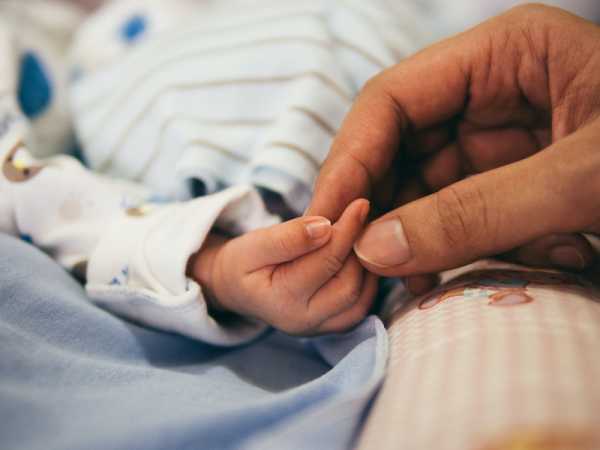
While knowing that sleeping on the back is recommended for their babies, parents may end up believing that sleeping on the stomach is also just fine (Photo: Unsplash)
Each year across the EU, around 1,200 babies die of Sudden Infant Death Syndrome (SIDS).
SIDS is the unexpected death of a baby under one year of age that remains unexplained after a full investigation. Back in the 1990s, the American Academy of Pediatrics published clear recommendations for preventing SIDS, based on scientific data, which are well-known.
These include placing infants on their back to sleep alone in their crib, on a firm, flat mattress with a fitted sheet, with no loose soft items. Breastfeeding is recommended and they should never be exposed to second-hand smoke.
However, a recent European study carried out in 11 European countries, including France, Germany, Italy and Spain, just published in The Journal of Pediatrics, finds that almost 80 percent of baby-product packaging depicting a sleeping infant show a sleep position clearly identified as a major risk factor for SIDS.
The research team reviewed 631 nappy packages (for babies weighing less than five kg), 49 percent of them showing a picture with a sleeping baby. Of these, we found that 79 percent of packages depicting a sleeping baby were inconsistent with at least one recommendation to prevent SIDS.
For example, 45 percent of the packages depicted a baby on their front, 51 percent with soft objects or loose bedding, and 10 percent showed babies sharing their sleeping space with someone else.
This is obviously a very high proportion of images inconsistent with safe infant sleep recommendations. While rectifying this is imperative, primarily to reduce the dissemination of misinformation for ethical reasons, there are additional practical concerns associated with allowing the circulation of these images.
Advertising pictures have a formidable role in shaping consumer habits. While they have historically been important tools for persuasion, they have equally been a source of information for consumers. Indeed, the term “advertisement” comes from the French word avertissement, which means “warning”.
When an advertisement conveys incorrect information, such as depicting a baby in a dangerous sleeping position, two important issues arise in terms of parents’ information processing. First, consumers generally believe that advertisement images are crafted by experts and therefore regard them as authoritative sources.
In particular, advertising images for baby products act as an authority for young parents, since — particularly for a vulnerable population such as babies — manufacturers are expected to know what they are doing.
As a result, parents are likely to accept the information presented to them without probing its validity. This phenomenon has long been known as the authority bias in decision-making.
Second, and this may be even more pernicious, some may argue that parents should already know about safe sleep recommendations for infants, because these are consistently communicated to them by maternity hospitals and pediatricians.
Sign up for EUobserver’s daily newsletter
All the stories we publish, sent at 7.30 AM.
By signing up, you agree to our Terms of Use and Privacy Policy.
However, repeated exposure to erroneous information on baby packaging (e.g., an infant sleeping on their stomach) can produce an illusory truth effect.
This effect, well-known by social psychologists, occurs when consumers who are explicitly told which information should be believed, still tend to regard repeatedly presented false information as true.
In other words, being informed of the official safe sleep recommendations by medical staff does not protect consumers from repeated exposure to advertising material depicting infants in unsafe sleep positions. Consumers exposed to misleading images often display knowledge neglect — the failure to rely on stored knowledge.
So, while knowing that sleeping on the back is recommended for their babies, parents may end up believing that sleeping on the stomach is also just fine.
There is one remarkably easy way to put an end to this arguably grim picture, which is to legislate at the European level.
Leading by example is a basic principle of transformational leadership, and advertisers of baby products, too, should have to comply with it, given their power and impact on families.
New European legislation banning images of babies in unsafe sleeping positions would not be a first. Ten years ago, European legislation banned images of infants on infant formula packaging in an effort to prevent the idealisation of milk substitutes over breast milk.
Let’s hope the European Commission and MEPs hear this message as this would contribute to building a healthier information environment for European consumers and help maximise babies’ safety while sleeping.
Source: euobserver.com



